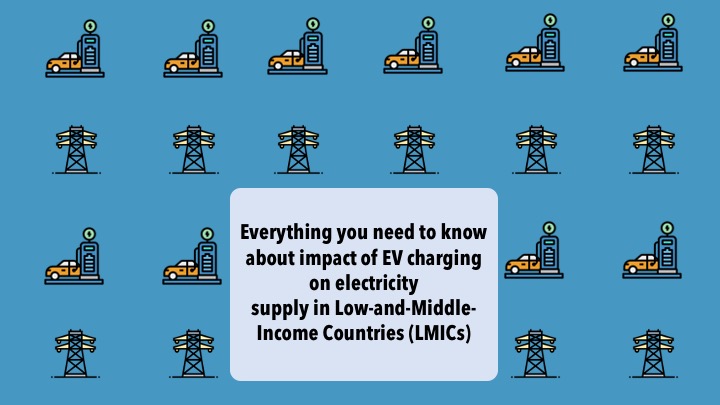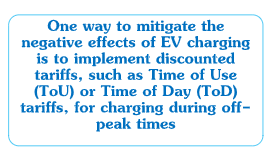
The adoption of electric vehicles (EVs) in low and middle-income countries (LMICs) is largely dependent on the ability of the power sector to provide reliable and affordable electricity. In these countries, access to electricity and a stable supply of it are still major concerns, and therefore it is important to consider both the power and transportation sectors together when planning and developing infrastructure for EVs.

Apart from the need for additional capacity and grid extension, the two most common challenges in the LMIC electricity sector are high transmission and distribution losses and grid reliability. In LMICs, these losses are estimated to be around 10%[1], but they can be much higher in some countries, such as Togo, Haiti, Benin, and the Republic of Congo, where losses can exceed 40%. These losses can result in either higher consumer prices or higher government expenses to compensate utilities for their lost revenue. The adoption of electric vehicles may exacerbate these losses, as they will require additional electricity to charge.
Grid reliability is another important factor to consider in the adoption of EVs in LMICs. If large number of EVs are being charged at the same time, it may strain the grid and cause reliability issues. Experience in countries with a high adoption of EVs has shown that users tend to charge their vehicles during periods of high demand, such as overnight (8pm to 4am) and in the afternoon (11am to 4pm). This may pose a challenge for grid operators in LMICs, as they may need to increase capacity to meet this demand.
The demand curve spike (as a result of EV charging) can have a significant impact on the distribution system and possibly cause voltage instability, harmonic distortion, power losses, and unstable supply. One way to mitigate these negative effects is to implement discounted tariffs, such as Time of Use (ToU) or Time of Day (ToD) tariffs, for charging during off-peak times when demand for electricity is lower. This can help to reduce the impact of EV charging on the grid.
There are also alternative solutions that can be used to reduce the negative effects of uncontrolled EV charging on the grid. These solutions include battery energy storage systems (BESS), smart charging, and vehicle-grid integration (VGI). BESS can store excess electricity generated by the grid or by renewable energy sources and then release it back into the grid when needed, helping to stabilize the supply of electricity. Smart charging involves using algorithms to optimize the timing of EV charging in order to minimize the impact on the grid. VGI involves allowing EVs to act as both a load on the grid (when they are being charged) and a source of electricity (when they are being driven and their batteries are charged).Effective connected load monitoring at the distribution and transmission levels is also critical in managing the difficulties associated with EV charging. This involves monitoring the demand for electricity in real-time and adjusting the supply accordingly in order to maintain stability and reliability.
In the early stages of EV adoption, grid stability may not be a major concern for utilities because the number of EVs on the road will be relatively less. However, as the penetration of EV grows, it will be important for utilities to prioritize load balancing between EV loads and other connected loads in order to reduce the risks of grid instability.
To meet the anticipated growth in demand for both transportation and electricity, it will be necessary to implement integrated policy changes, coordinate planning, and invest in both the energy and transportation sectors. These measures may include requiring the installation of smart meters and allowing the use of EVs for grid services in the commercial sector. By taking a holistic approach to planning and development, it will be possible to ensure that the necessary infrastructure is in place to support the growing demand for EVs.
On the other hand, adoption of EVs offers utilities and Independent Power Producers (IPPs) new business opportunities in the EV value chain. For instance, operators and service providers can use renewable energy (RE) at charging stations, and EV manufacturers can use RE at their facilities. This can aid in decarbonizing the entire EV value chain from manufacturing to recycling. The smart integration of energy storage systems with renewables can increase grid flexibility, reduce fixed demand charges, and make business propositions more attractive by providing low-carbon, reliable, and affordable energy to consumers. Collaboration between the electricity and transportation sectors can also improve energy availability, particularly in rural areas, where the development of renewable-powered micro-grid solutions may be coupled with new demand from electric vehicles.
Although the adoption of EVs may have an impact on the electricity supply in LMICs, there are a number of ways to reduce the risks and fortify the infrastructure with timely government interventions. These interventions may include implementing policies and regulations, providing financial incentives, and investing in research and development to improve technologies and infrastructure.



